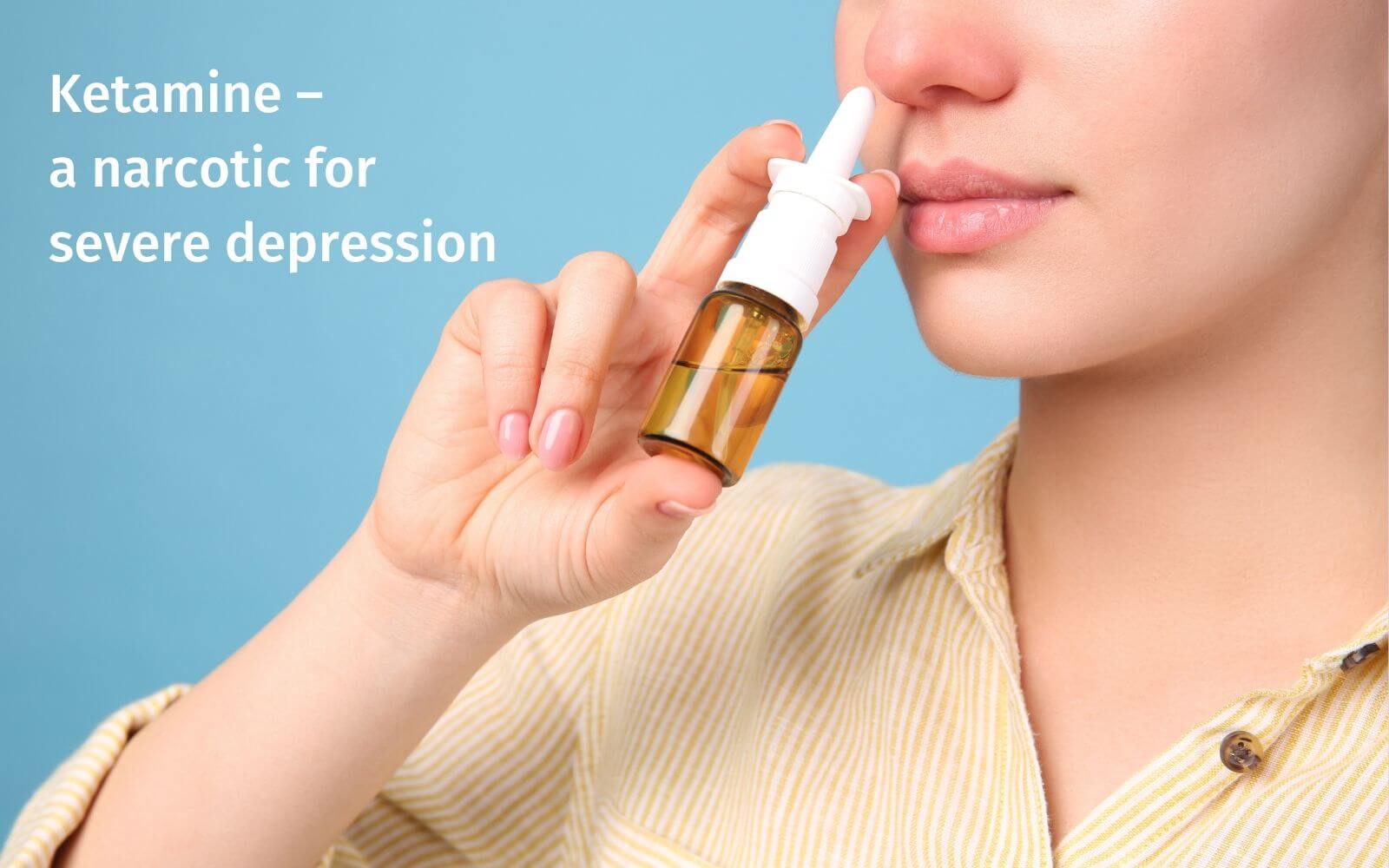
Ketamine – a narcotic for severe depression
Depressive disorders are among the most common mental illnesses. Every tenth adult suffers a depressive episode at least once in their lives. In most cases, symptoms can be alleviated with behavioral therapy or conventional medications. In about 30 percent of all cases, however, the therapeutic approaches prove to be ineffective. These are referred to as treatment-resistant diseases.
Conventional antidepressants are ineffective in some cases
Most of the antidepressants administered in Germany were developed on the basis of the hypothesis that there is a lack of neurotransmitters (serotonin, dopamine and norepinephrine) in the brain that are important for the transmission of stimuli. This deficiency leads to the well-known symptoms such as a deterioration in mood, psychomotor slowdown, and more. Conventional antidepressants ensure a higher availability of monoamines in the synaptic cleft of neurons, thus enabling increased stimulus transmission and a more positive mood.
Unfortunately, only some patients respond to antidepressants in this way. Another problem is that it often takes several weeks of constant intake to see a noticeable improvement in symptoms. At the same time, side effects such as headaches, dizziness, anxiety and weight gain are common. It is therefore understandable that those affected often stop taking the medication at an early stage.
Ketamine regulates glutamate-GABA imbalance
Over the past 20 years, intensive research has been carried out to develop alternative solutions. An active ingredient, originally known as an anesthetic, is showing up here as a beacon of hope: ketamine. Ketamine can alleviate depression and eliminate suicidal thoughts within a very short time.
Ketamine has often been used as a racemate. In other words, as a mixture of the enantiomers (S)-ketamine and (R)-ketamine. It is only since 2019 that the pure (S)-enantiometer esketamine has been approved as an intranasal agent for the treatment of depression.
On the one hand, ketamine makes it possible to correct a disturbed glutamate-GABA imbalance. Depressed people have an overactive glutamatergic system. As an NMDA receptor antagonist, ketamine can effectively intervene and regulate here. In addition, the active ingredient stimulates the sprouting of spinous processes on the dendrites.
Positive effect after just a few hours
A big advantage of ketamine is the rapid effect, which often starts after just a few hours to days. In comparison, conventional antidepressants usually only take a few weeks to take effect.
In the case of intravenous therapy, the most common side effects are drowsiness, restlessness and dissociative phenomena on the day of the infusion. In the case of intranasal use, the side effects are much less pronounced. When ketamine is used for depression therapy, an approximately ten times lower dose is used than for anesthesia. Despite everything, the nasal spray cannot be dispensed to patients. It is only administered under medical supervision.
The majority of treatment-related side effects, such as dissociative symptoms, dizziness, nausea, vomiting, increased blood pressure and sedation, occur immediately after dosing and usually disappear on the same day.
MORE INFORMATION ABOUT KETAMINE AND OTHER ACTIVE INGREDIENTS
→ Do you have any questions about this active ingredient?
Then feel free to send us a message.
→ Are you looking for more active ingredients?
Special products require special partners. In cooperation with our long-standing and reliable partners, we offer individual customer synthesis and contract manufacturing. We are looking for the right partner for you in our worldwide network of qualified suppliers, which has been established for years.
An overview of our active ingredients can be found here.





 4c media
4c media